Abstract
Many dyslexic children are unable accurately to control the movements of their eyes even when they are not trying to read. This immaturity helps to explain their visual confusions. It may result from failure to develop dependable associations between retinal and ocular motor signals these are essential to fix the true, as opposed to retinotopic, locations of objects in the outside world. We have used a new test to study retinal/ocular motor correspondence in dyslexic children and age/IQ matched normal readers. Over half the dyslexics showed unstable ocular motor dominance.
Full text
PDF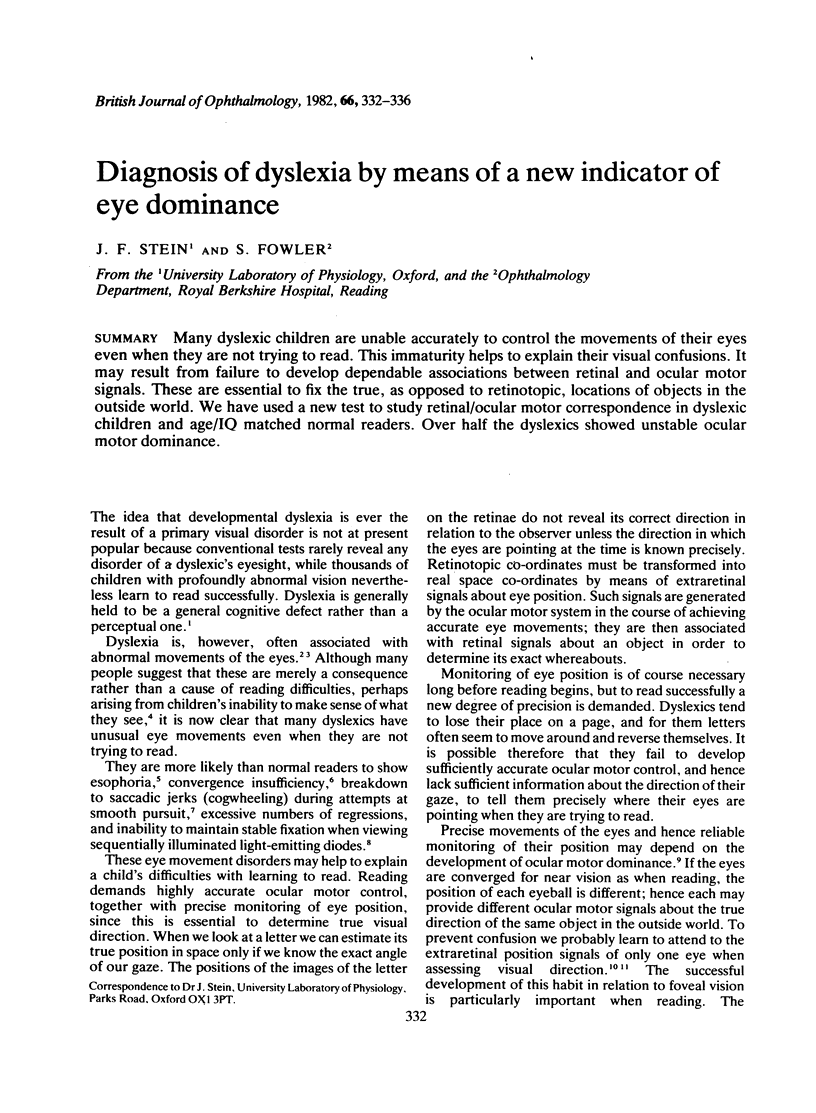
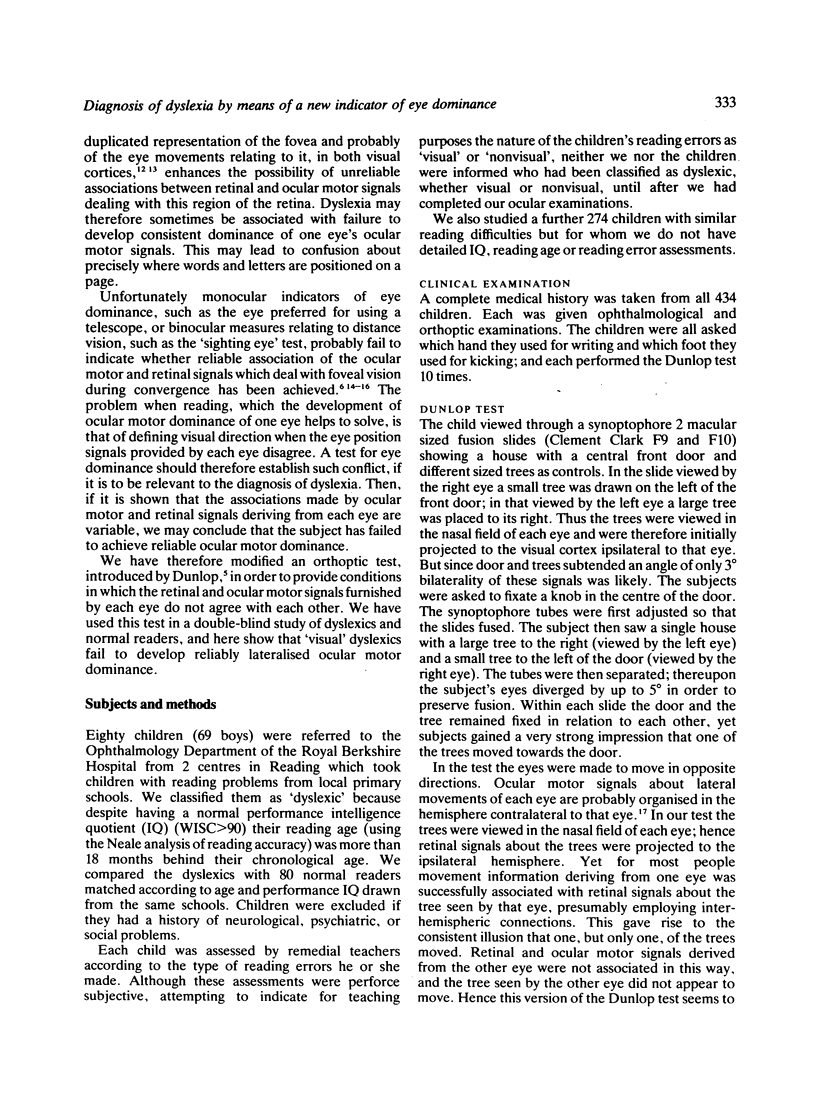
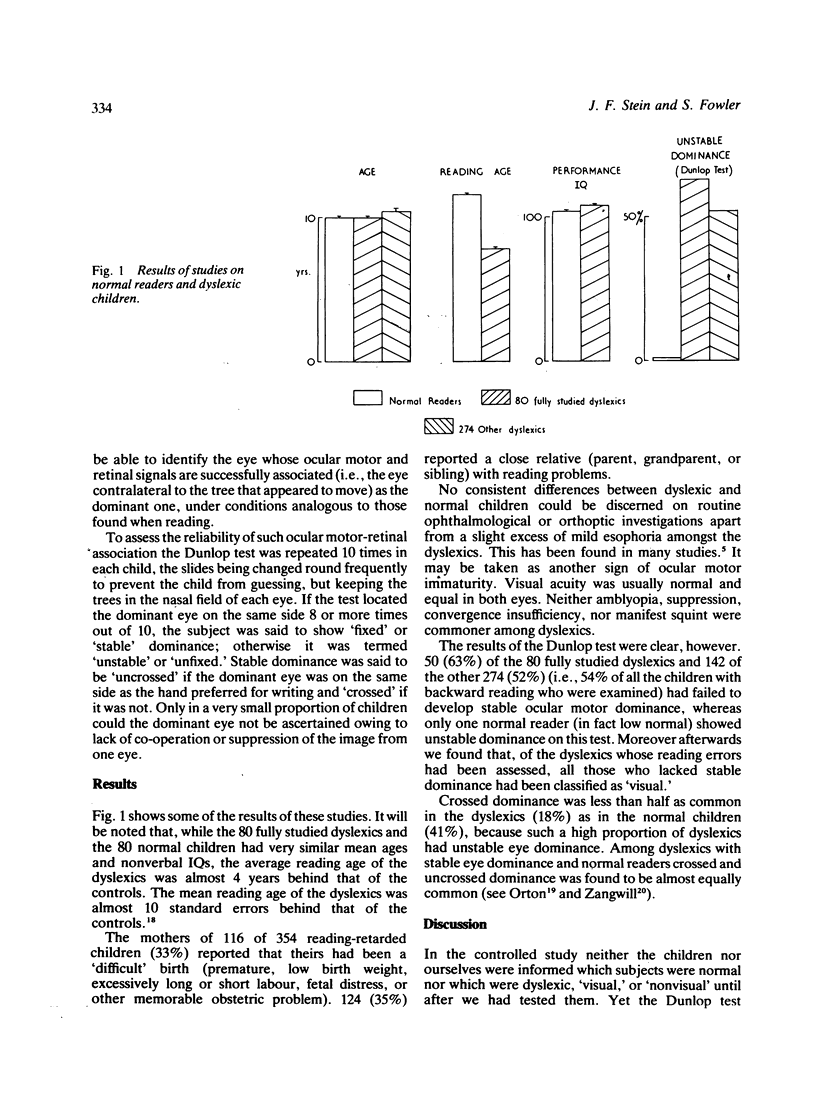
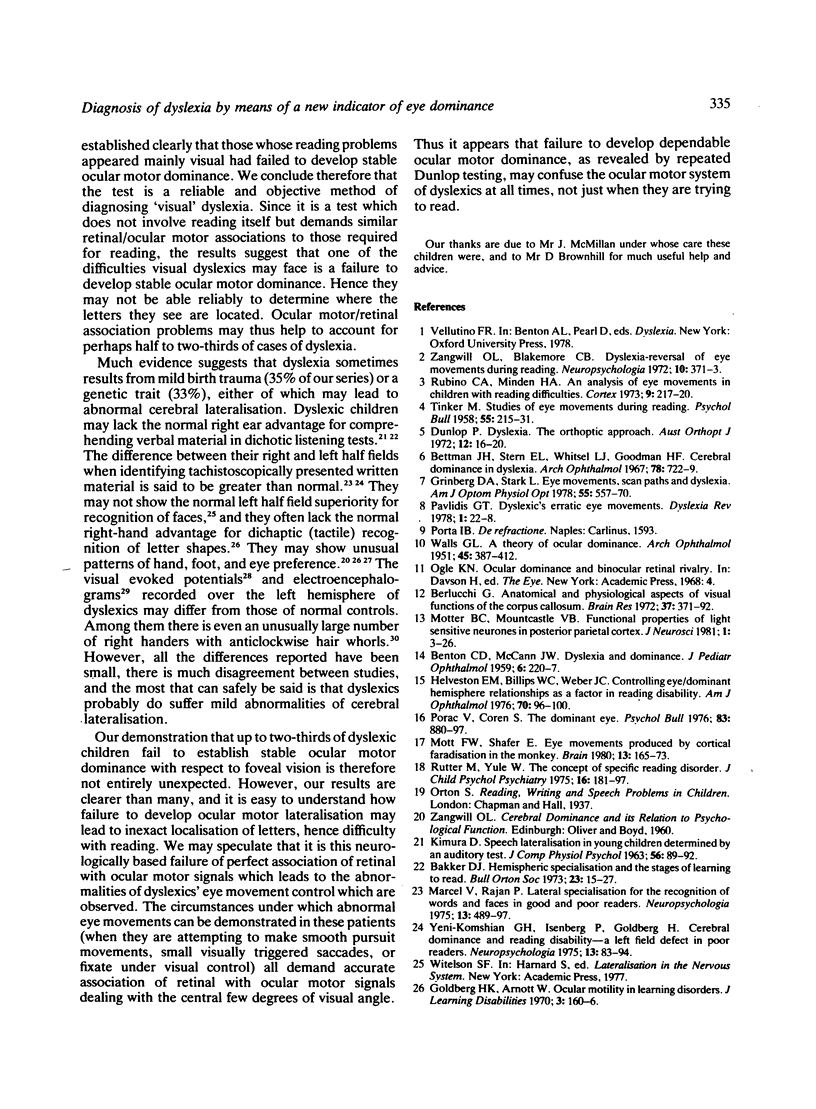
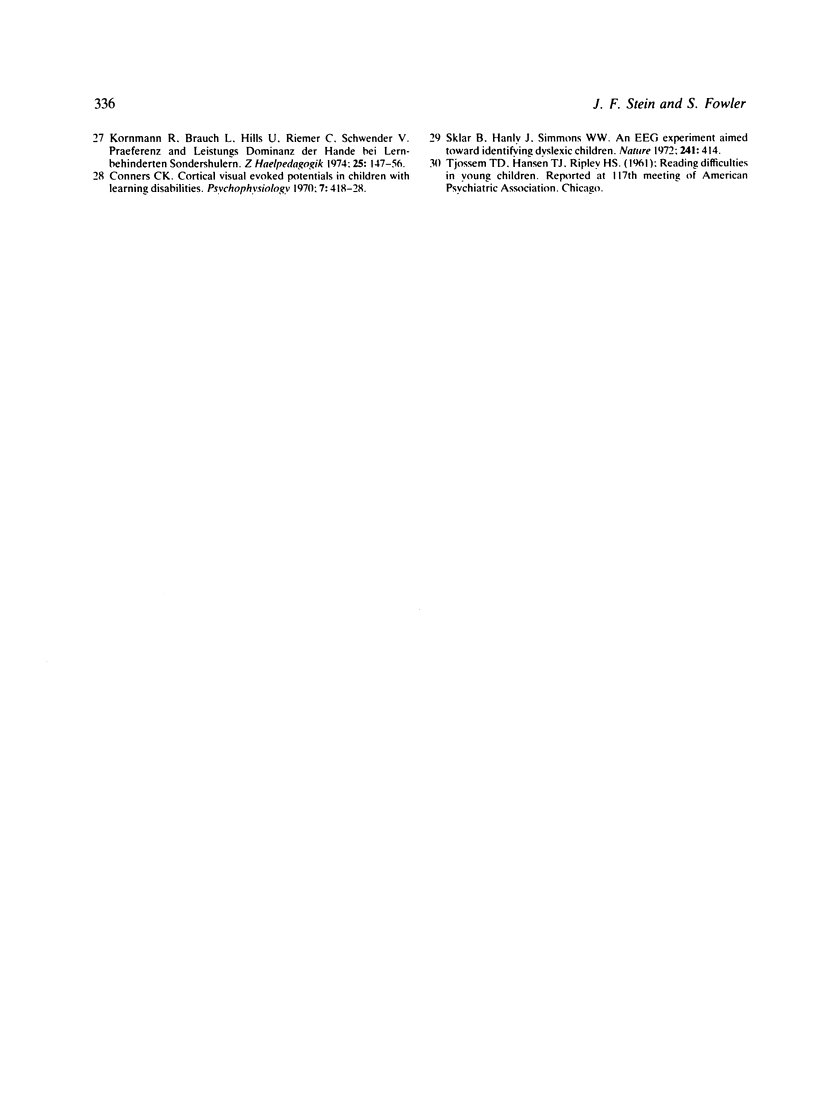
Selected References
These references are in PubMed. This may not be the complete list of references from this article.
- Adler-Grinberg D., Stark L. Eye movements, scanpaths, and dyslexia. Am J Optom Physiol Opt. 1978 Aug;55(8):557–570. doi: 10.1097/00006324-197808000-00005. [DOI] [PubMed] [Google Scholar]
- Berlucchi G. Anatomical and physiological aspects of visual functions of corpus callosum. Brain Res. 1972 Feb 25;37(2):371–392. doi: 10.1016/0006-8993(72)90708-1. [DOI] [PubMed] [Google Scholar]
- Bettman J. W., Jr, Stern E. L., Whitsell L. J., Gofman H. F. Cerebral dominance in developmental dyslexia. Role of the ophthalmologist. Arch Ophthalmol. 1967 Dec;78(6):722–729. doi: 10.1001/archopht.1967.00980030724006. [DOI] [PubMed] [Google Scholar]
- Conners C. K. Cortical visual evoked response in children with learning disorders. Psychophysiology. 1970 Nov;7(3):418–428. doi: 10.1111/j.1469-8986.1970.tb01767.x. [DOI] [PubMed] [Google Scholar]
- Helveston E. M., Billips W. C., Weber J. C. Controlling eye-dominant hemisphere relationship as factor in reading ability. Am J Ophthalmol. 1970 Jul;70(1):96–100. doi: 10.1016/0002-9394(70)90672-0. [DOI] [PubMed] [Google Scholar]
- Marcel T., Rajan P. Lateral specialization for recognition of words and faces in good and poor readers. Neuropsychologia. 1975 Oct;13(4):489–497. doi: 10.1016/0028-3932(75)90072-x. [DOI] [PubMed] [Google Scholar]
- Motter B. C., Mountcastle V. B. The functional properties of the light-sensitive neurons of the posterior parietal cortex studied in waking monkeys: foveal sparing and opponent vector organization. J Neurosci. 1981 Jan;1(1):3–26. doi: 10.1523/JNEUROSCI.01-01-00003.1981. [DOI] [PMC free article] [PubMed] [Google Scholar]
- Porac C., Coren S. The dominant eye. Psychol Bull. 1976 Sep;83(5):880–897. [PubMed] [Google Scholar]
- Rubino C. A., Minden H. A. An analysis of eye-movements in children with a reading disability. Cortex. 1973 Jun;9(2):217–220. doi: 10.1016/s0010-9452(73)80030-9. [DOI] [PubMed] [Google Scholar]
- Rutter M., Yule W. The concept of specific reading retardation. J Child Psychol Psychiatry. 1975 Jul;16(3):181–197. doi: 10.1111/j.1469-7610.1975.tb01269.x. [DOI] [PubMed] [Google Scholar]
- Sklar B., Hanley J., Simmons W. W. An EEG experiment aimed toward identifying dyslexic children. Nature. 1972 Dec 15;240(5381):414–416. doi: 10.1038/240414a0. [DOI] [PubMed] [Google Scholar]
- TINKER M. A. Recent studies of eye movements in reading. Psychol Bull. 1958 Jul;55(4):215–231. doi: 10.1037/h0041228. [DOI] [PubMed] [Google Scholar]
- Yeni-Komshian G. H., Isenberg D., Goldberg H. Cerebral dominance and reading disability: left visual field deficit in poor readers. Neuropsychologia. 1975 Jan;13(1):83–94. doi: 10.1016/0028-3932(75)90051-2. [DOI] [PubMed] [Google Scholar]
- Zangwill O. L., Blakemore C. Dyslexia: reversal of eye-movements during reading. Neuropsychologia. 1972 Sep;10(3):371–373. doi: 10.1016/0028-3932(72)90029-2. [DOI] [PubMed] [Google Scholar]


